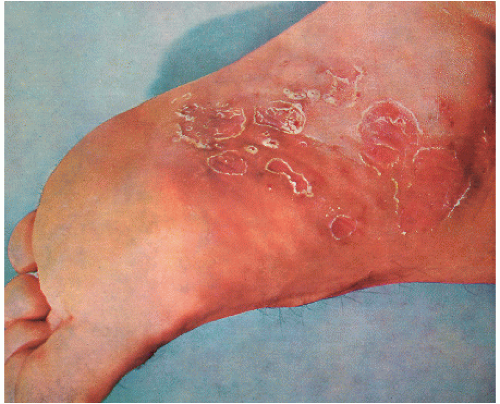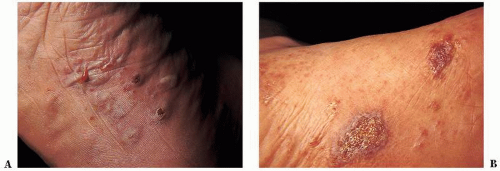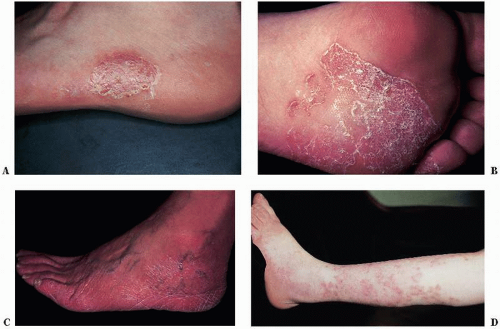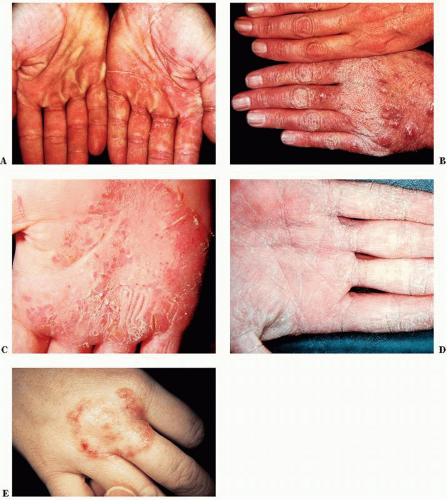Antifungal Agents |
Route of Administration |
Organism Responsive |
Side Effects |
Allylamines |
|
Naftifine (Naftin) |
Cream, gel |
Dermatophytes |
Rare |
|
Terbinafine (Lamisil) |
Cream, spray, oral |
Dermatophytes, tinea versicolor |
Oral, rarely liver toxicity |
Benzylamines |
|
Butenafine HCL (Mentax, Lotrimin Ultra Cream) |
Cream |
Dermatophytes |
Rare |
-Azoles |
|
Clotrimazole (Mycelex, Lotrimin cream, solution Troches suppositories) |
Cream |
Dermatophytes, tinea versicolor, Candida |
Rare |
|
Econazole (Spectazole) |
Cream |
Dermatophytes, tinea versicolor, gram(+) bacteria |
Rare |
|
Fluconazole (Diflucan) |
Oral |
Dermatophytes, tinea versicolor,cryptococcosis, Candida |
Rare |
|
Itraconazole (Sporanox) |
Oral (with food) |
Dermatophytes, tinea versicolor, Candida, sporotrichosis, some deep fungi |
Rare liver toxicity |
|
Ketoconazole (Nizoral) |
Cream shampoo, oral |
Dermatophytes, some deep fungi, Candida, tinea versicolor |
Liver toxicity when oral |
|
Miconazole (Micatin, Monistat, Zeasorb AF) |
Cream, powder spray, suppositories |
Dermatophytes, tinea versicolor, Candida |
Rare |
|
Oxiconazole (Oxistat) |
Cream |
Dermatophytes, tinea versicolor, Candida |
Rare |
|
Sertaconazole (ertaczol) |
Cream |
Dermatophytes, tinea versicolor, Candida |
Rare |
Polyenes |
|
Amphotericin B (Fungizone, Abelcet) |
Intravenous |
Deep fungi sepsis, Candida sepsis |
Common renal toxicity thrombophlebitis, hypokalemia |
|
Nystatin (Mycostatin) |
Cream, ointment, powder, oral (not absorbed), pastilles, with triamcinolone (Mycolog II cream, ointment) |
Candida |
Rare |
Miscellaneous |
Flucytosine (Ancobon) |
Oral, usually given with amphotericin B |
Deep fungi sepsis, Candida sepsis |
Liver, renal, bone marrow toxicity, gastrointestinal |
Ciclopirox (Loprox, Penlac) Penlac Nail Lacquer |
Gel, cream, shampoo, suspensions |
Dermatophytes, Candida |
Rare |
Griseofulvin (Gris-Peg), Fulvicin, Grifulvin |
Oral (evening with fatty meal) tablets, suspension |
|
Rare |
Selenium sulfide (Selsun, Head & Shoulders Intensive Treatment) |
Shampoo (sometimes used as lotion) |
Tinea versicolor |
Irritation |
Saturated solution of potassium iodide (SSKI) |
Oral |
Sporotrichosis |
Gastrointestinal toxicity, bitter-taste, goiter if long-term |
Tolnaftate (Tinactin) |
Cream |
Dermatophytes |
Rare |
Undecylenic acid (Desenex) |
Cream |
Dermatophytes |
Rare |
Capsofungin (Candidas) |
Intravenous |
Candidiasis sepsis, Aspergillosis sepsis |
Common, fever, headache thrombophlebitis, rash |
Micafungin (Mycoviral) |
Intravenous |
Candidiasis sepsis, esophagitis |
Common, headaches, rash, fever, bone marrow thrombophlebitis |
Vericonazole (Ufend) |
Intravenous, oral |
Candida sepsis, esophageal, Aspergillosis sepsis, Fusariesis sepsis |
Visceral impairment, liver toxicity, fever, cardiac toxicity |
|













